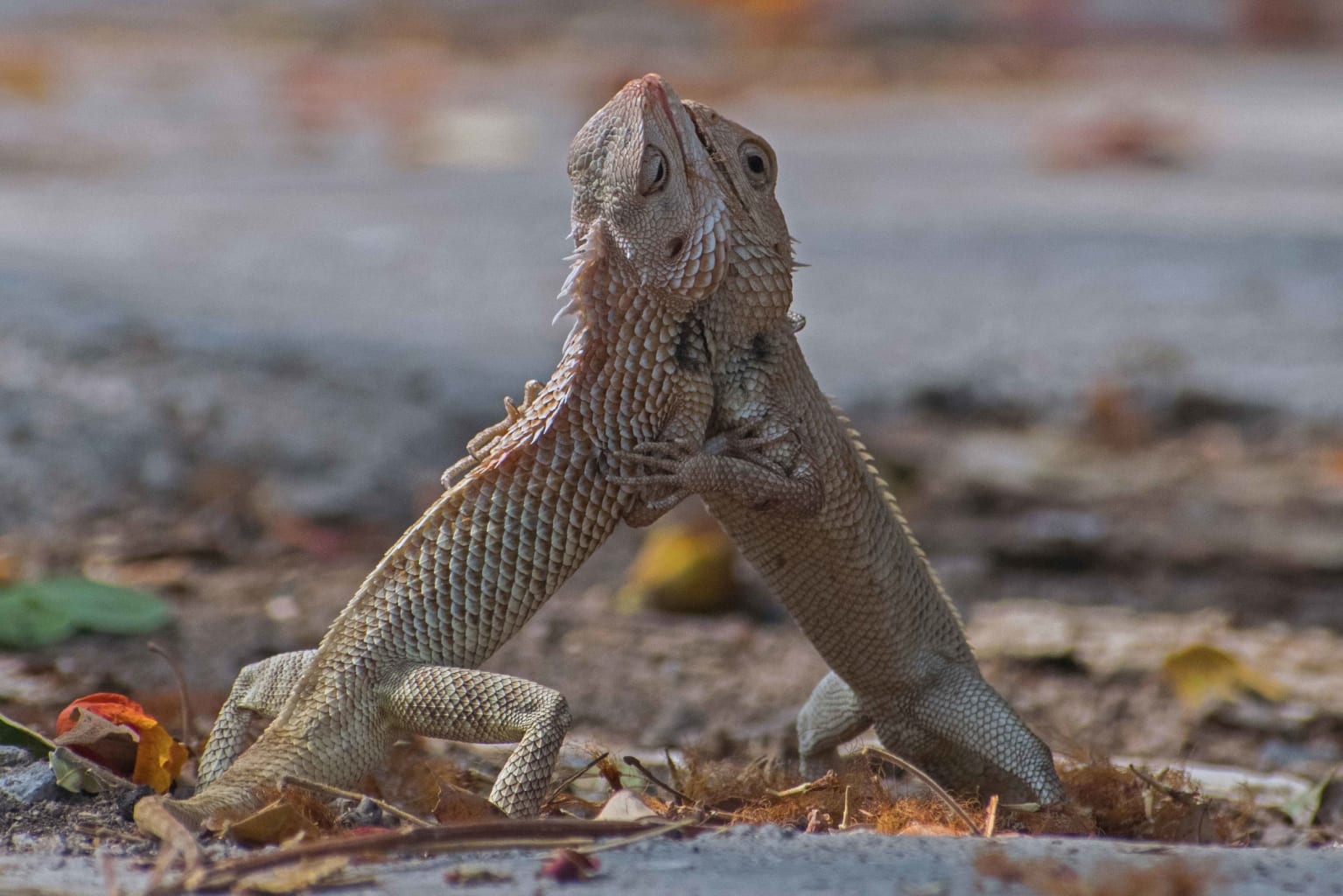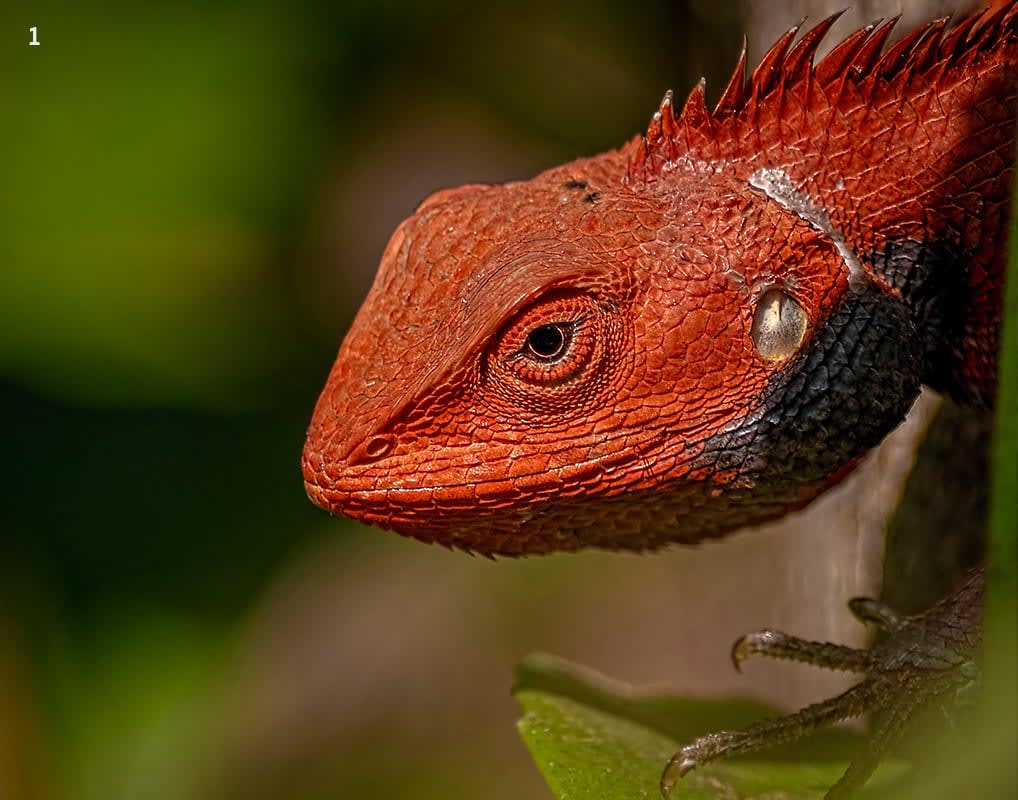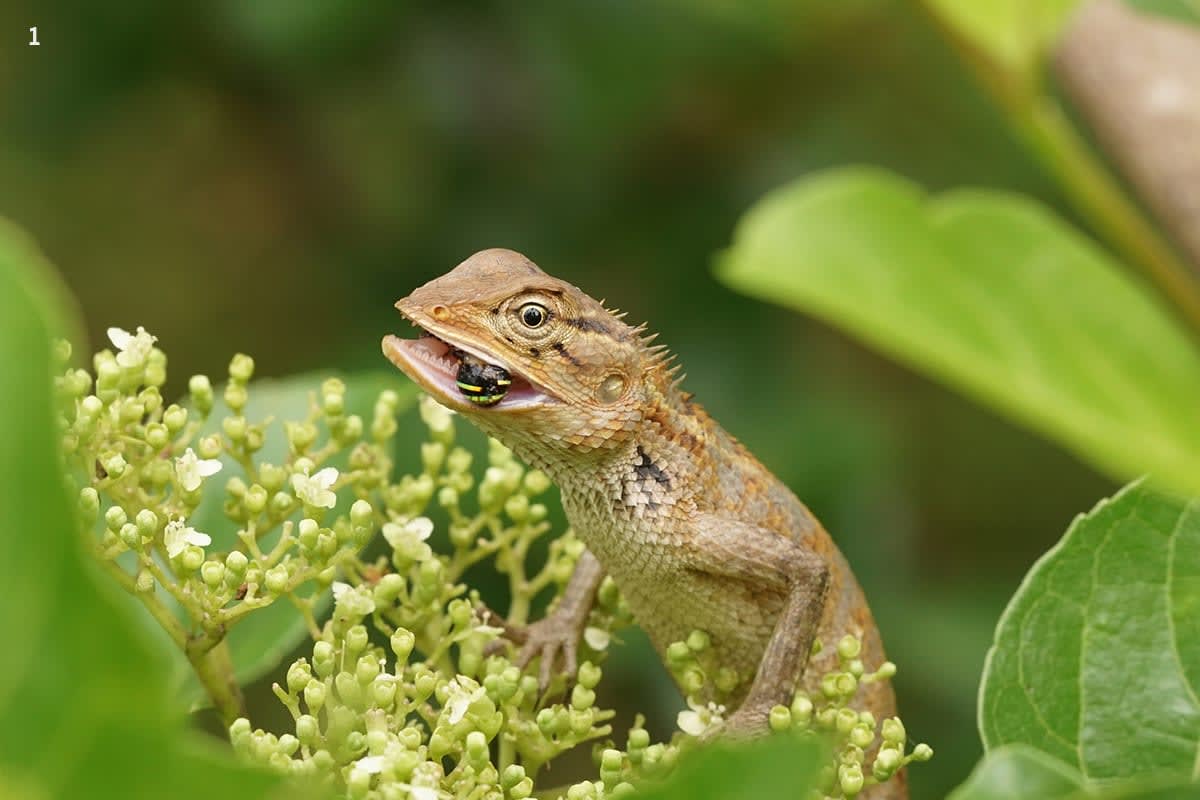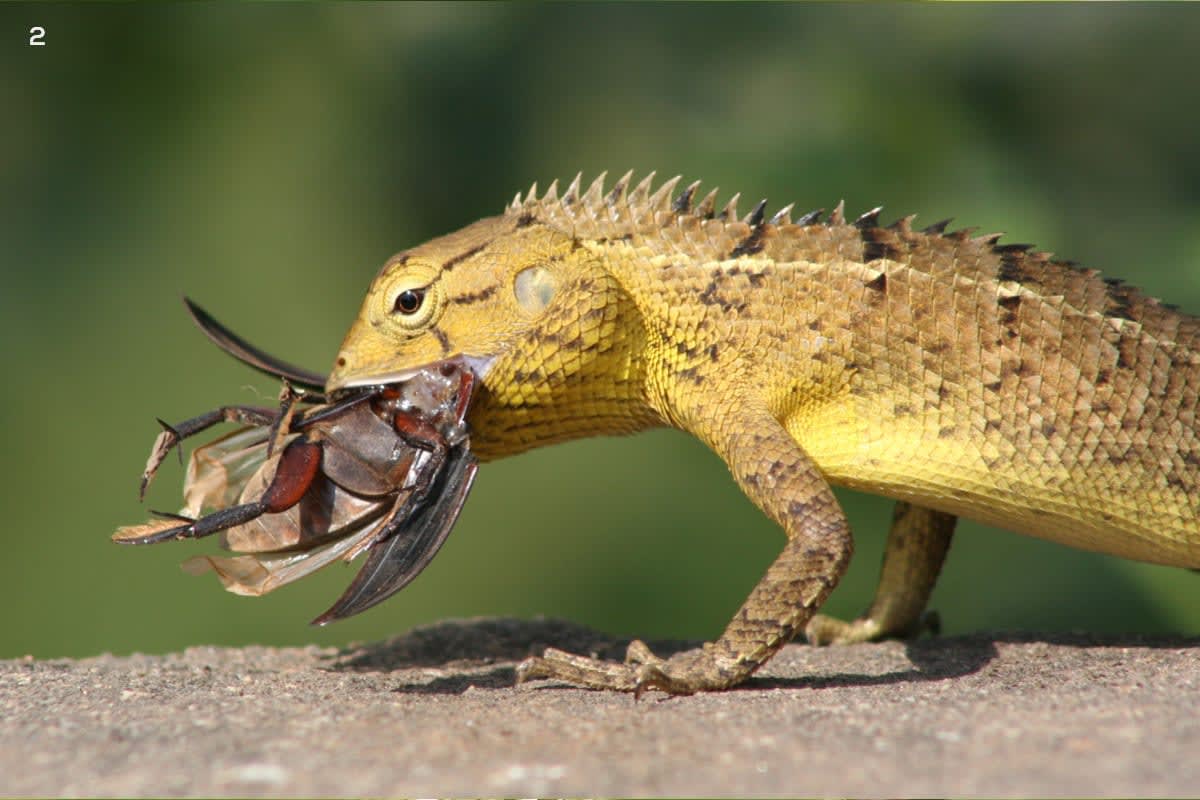 Listen to this article
•
15:34 min
Listen to this article
•
15:34 min
“Bloodsuckers come down from the trees and suck all the blood from the forehead, leaving the human anaemic, and becoming red itself” — this is the common belief among farmers in Odisha with reference to Oriental garden lizards (Calotes versicolor), abundant in their farmlands. Why are they called bloodsuckers? Perhaps because males during breeding season, turn red in the head and neck region. Most of these lizards are seen looking down from trees, their conspicuous red heads bobbing up and down. This distinct behaviour and the red coloration have earned them the moniker of devil or bloodsucker.
Garden lizards are among the least studied reptiles; they are not considered charismatic, nor are they threatened enough to draw the attention of researchers or conservationists. This is why we hardly know anything about their behaviour and role in the ecosystem.
What we do know, however, is that garden lizards are a fantastic group of insectivorous animals that have coexisted with us in our backyards and farmlands for decades. They are highly adaptable, can learn colour, taste, and space, and can discriminate between cues. They form an important part of farmland biodiversity and are prolific breeders, breeding almost all year round. Thus, they can benefit us as bioregulators of crop pests.
Cover Photo: A male garden lizard displays its colour and dewlap (flap of skin under the chin) to advertise interest in a female or display rivalry towards another male. Cover Photo: ePhotocorp/Getty Images
Sit and wait
Oriental garden lizards are active during the day (diurnal). They are ambush predators, i.e., their hunting strategy involves sitting and waiting on a perch, often a low branch or rock, scanning the ground for prey. When a garden lizard picks up prey movement, it rushes down in a few quick high-speed sprints, grasps the prey alive, and returns to its perch.
Reptiles are known to be proficient in picking up chemical cues from prey by flicking their tongues. Oriental garden lizards, however, rely on vision. Research with juvenile garden lizards shows that they do not show any foraging interest when presented with swabs that have the body odour of prey insects. They do not flick their tongues, which suggests their vomeronasal organ system is underdeveloped. Even keeping a dead insect inside their enclosure did not pique their interest. But upon being presented with live prey, these reptiles were observed lunging to grab it. Even though these lizards did not use smell to forage prey they still showed head movement, which indicates an awareness of prey nearby. But because they could not detect it visually, they did not display attacking behaviour. Therefore, movement of prey enhances their visual acuity.

World of colour
Unlike humans, who have trichromatic vision (three cone cells for red, blue and green that allow us to see within a visible range of 380-700 mm), these reptiles are tetrachromats (have four cone cells) allowing them to see colors beyond the normal human visible range (like ultraviolet light). Enhanced colour vision is a significant advantage garden lizards have while foraging. Colour vision in these predators allows them to forage by avoidance learning. Prey that flash conspicuous colours (aposematic prey) advertise their defences and declare they are toxic by displaying bright warning colours like red, yellow, or black. Predators that hunt visually will detect these from a great distance, and there is rarely any recognition error.
Garden lizards show associative learning abilities. Naive juvenile lizards successfully learn the colour of the dish from which they are fed and prefer the colour over unfamiliar colours. For example, newly hatched young fed in an orange dish chose the orange over green or other coloured dishes. Such studies indicate that garden lizards can be trained to choose a colour, i.e. to associate colour with food. They do not have any inherent preference for specific colours. Adult lizards also show colour learning ability when they accept food first from familiar-coloured dishes. Therefore, not only can garden lizards learn to avoid toxic prey, but they can also learn to select preferred prey by colour. This ability to successfully remember and recognise prey by colour is of immense importance in the wild.
Good taste
One way predators learn and remember which prey is toxic or unpalatable is the memory of consequences they faced the last time they ingested a particular prey. If the consequences include gastrointestinal distress, the learning is very effective. Insects feed on various plant parts that contain plant secondary metabolites (compounds produced by the plants for defence etc.) and alter the chemical composition through the digestive process or preserve it in an unaltered form. Most insectivores, including Oriental garden lizards, are not adapted to metabolise these plant compounds. Therefore, they have to learn and remember tastes in order to avoid eating toxic prey. Garden lizards have tastebuds and they can discriminate between tastes and associate taste with colour. These learning abilities are of utmost importance to survive in the wild. Some prey could be toxic enough to kill them. Knowing how a particular coloured prey tastes can help them avoid unnecessarily prospecting every prey they encounter.
Research shows that one-day-old garden lizards can discriminate between natural-tasting prey and bitter prey presented in two coloured dishes. Their choice was significantly influenced by previous learning, and 97 per cent of the lizards avoided the food from the dish with bitter food, while others tasted and spat it out. Even adult lizards showed a change in colour preference when a familiar coloured dish was offered to them with bitter food. Such perception about colour and taste enables rapid learning that can be sustained over time.

Prolific procreators
Females lay an average of 17-21 eggs at a time. Temperature-dependent sex determination is well-known in reptiles, and this is true for garden lizards too. Garden lizards lay eggs in burrows and the temperature of the burrow determines the sex of the offspring. Often due to variations in temperatures the sex ratio of offspring can be skewed to produce more males or more females.
Females can be early breeders laying eggs in May-June, middle breeders (July-August), or late breeders (September-October). During early breeding, females use their body fat to develop the clutch (hence they are called capital breeders). Mid and late breeders depend on consuming food for the growth of the eggs (called income breeders). They may switch between capital breeding and income breeding depending on food availability.
Additionally, female garden lizards can store sperm for over six months (though this is rare). While mating, females derive the acid phosphatase from the males and store it in their sperm receptacle, allowing for sperm sustenance and fertility for over six months. Additionally, females have the ability for egg retention, the maximum ever reported being six months. They do this by arresting the embryonic growth in stage 34 (embryonic diapause) and preventing the expulsion of the egg.
These lizards are capable of using social cues where they use information from another individual to modify their own behaviour or influence growth. Males and females use chemical, tactile (touch), or olfactory (smell) cues from the opposite sex (social cues) to influence reproductive growth and enable reproduction.
Befriending the devil
Garden lizards can learn crop pest movement and colour association with taste. They spit out ladybird beetles which is a crop pest predator as it is bitter. If lizards can discriminate between the tastes of crop pests and other beneficial pest predators, they can learn to avoid pest predators and switch their preference to crop pests. Thereby, they can improve the abundance of pest predators and benefit us by increasing the pressure on crop pests.
Though we know very little about garden lizards, their brilliance cannot be denied. There are probably no direct threats to them as they are either ignored or feared but never cared for. However, the rapid intensification of agriculture, application of pesticides, and altering of farmlands can be a major threat to them. We must start appreciating their abilities and explore their role in our ecosystem. Like every animal, garden lizards are amazing in their own right; the least we can do is protect them for our own benefit.
Photo sources: with prey, in Maharashtra










